8. And Then (1985)
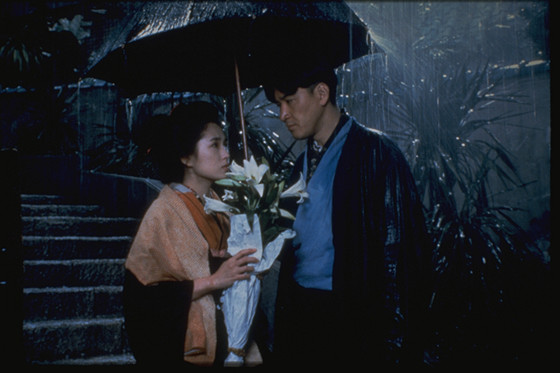
This is such an underrated film by an equally underrated director, Yoshimitsu Morita, who made almost 30 films but never managed to get into the spotlight. This movie is an adaptation of a Natsume Soseki novel by the same name. Adapting a novel by one of the greatest Japanese novelists is no easy feat, but Morita did an exceptional job.
Daisuke is unemployed, in search of a respectable job while living with his wealthy parents. When he was in university he was part of a group consisting of his friend Hiraoka, another boy, and his sister Michiyo. Daisuke, who was in love with Michiyo then, forced himself to step away and let Hiraoka marry her. When they return into his life, seeing their problematic relationship, his old love is rekindled.
The movie is slow, unconventional for Western standards, even puzzling. But it is equally poetic and beautiful, with the outdoor and rain sequences standing out. Morita, in the true Japanese style of filmmaking, induces emotion mainly through images and silence than words. Long uninterrupted shots and a dreamy atmosphere accompanied by Shigeru Umebayashi’s superb score are very effective, letting the viewer easily dive into the protagonist’s psyche.
Daisuke is tormented because of his love for Michiyo, who is still married to his friend, and he constantly tries to control himself. Michiyo is equally unhappy in her relationship with Hiraoka, feeling trapped and suffocated. Both characters are victims of their own mistakes and decisions, craving happiness in each other. Yet they never take the next step due to Daisuke’s adherence in a code of morality, let alone the imposing conservatism of Meiji era Japan.
The film is a sad contemplation on lost and wasted time, leaving the protagonists and the viewer hollow, constantly wondering what could have happened if he confessed his feelings back then.
The ambiguous ending revolves around a question that has tormented Daisuke most of his life, and is the one that defines the doomed fate of this subtle romance. Is it better if you stick to an old moral code you brought to yourself, or defy everything and submit to your heart’s desire? Which path should you follow to be true to yourself?
7. Brief Encounter (1945)
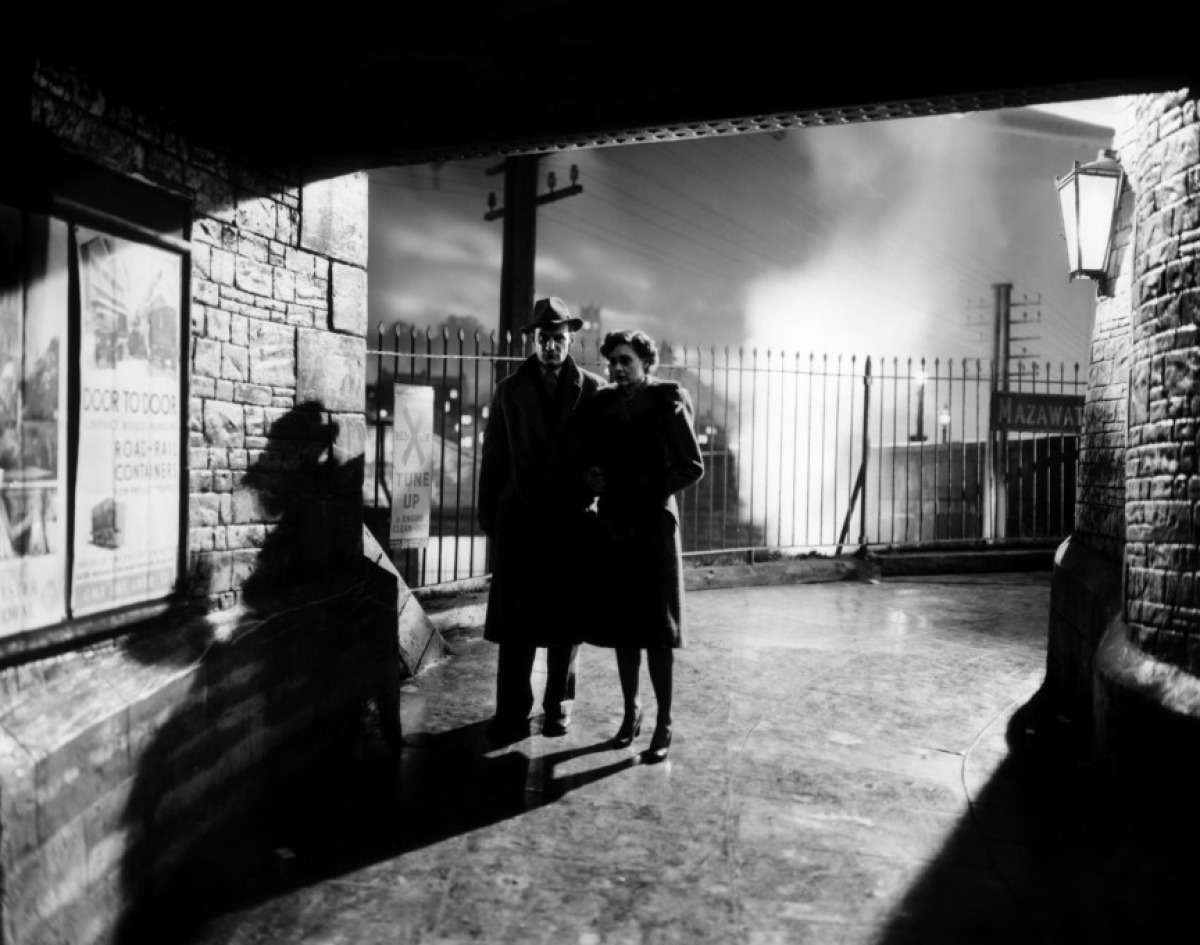
David Lean may be one of the most admired filmmakers of the past century, but he is mostly known for his timeless classic “Lawrence of Arabia” (1962).
Of course, no one denies the importance of “Lawrence of Arabia”; however, due to its massive fame and epic nature, other works by Lean are often overlooked. Such is the case with “Brief Encounter,” which, although it was nominated for three Oscars, it never received the praise it deserved until years later.
It is a beautiful and heartbreaking story of two people’s lives entwining as they both wait for their trains to go their separate ways. Laura and Alec, played by Celia Johnson and Trevor Howard, met at a railway station cafe, when she gets something in her eye and he takes it out for her.
Such a trivial matter kindled a romance between them that never meant to last as they are both married with children. Yet they are unhappy and unfulfilled with their lives and as they gradually fall in love with each other, feelings of guilt, love and fear perplex.
Adapted by Noel Coward’s play “Still Life,” Lean provides a simple, honest and realistic doomed romance as told by Laura, drenched in emotion and interacting feelings. Johnson’s performance is subtle and powerful as she confesses her feelings through internal monologue.
We see tenderness and love succeed guilt and fear and vise versa as the protagonists are trapped in their own conventionality, bound by social norms and fearing public outcry. Having an extramarital relationship in the 1940s was no small deal.
Yet they could never push themselves away from each other as they only felt alive and happy when they were together. Still, they quickly realize their love could never last, and both should return to their normal lives, dedicate themselves to their families, denying themselves happiness.
The last scene, already emotional enough, becomes a true cinematic marvel as their farewell is disrupted violently by Laura’s annoying, ignorant and chatty friend. Ending the movie in such a way seals the imminent doom of a heartfelt, sincere and forbidden romance that everyone rooted for. Never has a pat on the shoulder been more emotional and sad.
The somber tone of the film is described perfectly by one of Laura’s inner thoughts: “Nothing lasts, really… neither happiness nor despair, not even life lasts that long.”
6. Brokeback Mountain (2005)

This movie might as well be the epitome of doomed lovers. Lovers torn apart by fear of public outcry, society’s “expectations” and intolerance.
Two cowboys in rural America happen to get the same job as sheep herders on Brokeback Mountain. The relationship starts to grow as they spend more time together, and it quickly reaches a boiling point as the two heroes fall for each other. Unable to deal with their emotions, they eventually go their own way, marrying and having children. Yet they realize they need each other and the relationship is rekindled after years. This is where the real struggle begins.
The premise is unprecedented for Hollywood standards and one of the few daring moves of the industry. The idea of debunking an All-American symbol of masculinity, toughness and similar clichés, as the masses see the cowboys mainly because of John Wayne, is simply amazing.
The two characters are not simply two cowboys falling in love. The premise of the cowboy is utilized to condemn the norms society forms and always expects to be abided by, thus building an invisible wall between them, as they know they could never be accepted. Yet what makes the movie endearing is not the fact that they are cowboys. Not by a long shot.
It is the emotional performances that brought a genuine romance to life, the natural beauty of the bucolic background, and the progression of the plot. They are simply two people falling in love, unable to comprehend their emotions. They love and need each other, but quickly realize they could never be together and try to build their lives apart from each other, having families and ultimately forgetting each other. Yet they cannot.
No matter the fear for public outcry, their marriages and their regret, they cannot stay away from each other. The feelings are strong, as regret, love and passion entwine. So is tension, thus making the relationship toxic. These two were never meant to be together and they knew it all along.
This movie was never about homosexual cowboys as it was marketed. It was about finding one’s identity and trying to cope with a conservative society where there is no room for anything different. Everyone should be proud of who they are, yet this is easier said than done.
Ang Lee directed a masterpiece of American cinema getting all the help he could get by the two leads, Heath Ledger and Jake Gyllenhaal, who are simply breathtaking in their roles.
The final scene is pure cinematic gold. A hanging shirt inducing a emotional breakdown to the audience? Such is the power of cinema.
5. Lovers Of The Arctic Circle (1998)

Spanish cinema never ceases to amaze with its diversity in themes, emotional impact and inventive narratives. Julio Medem, who is arguably one of the best directors to come out of Spain, created a film about forbidden love, loss and chance that not only is very personal for him, but very important for his other movies as well that seem to interconnect.
The plot follows two step-siblings who grow up together and in their teenage years they eventually fall in love. When their parents divorce, they are separated for a very long time, pursuing other affairs and goals, but they never forget about each other.
A semi-incestuous love affair that you root for is not something you come up with every day. Yet as strange as it seems, Ana and Otto seems as though they are made for each other.
However, an incestuous teen relationship could never last. Either because it has to stay hidden or because the protagonists were too young and depended on their parents. So their relationship didn’t last. Medem, however, blends in chance and circumstances as well.
As if fate didn’t want them to meet each other again. There were many chances in their adult years of bumping into each other, but they never occurred. When they meet again, it is clearly decided by fate, as they meet in the Arctic Circle, where Otto, who is now a pilot, comes across Ana. This is where the timeline splits and we see that Ana might have died in a car accident.
The ambiguous ending leaves the viewer with two versions of reality: the happy one and the tragic one. The real version is never revealed.
Medem, with this ingenious ending, reflects on existence and human relationships. Do we actually have any control over our lives and choices, or are we pawns in a twisted game of fate, doomed from the start?
4. In The Mood for Love (2000)
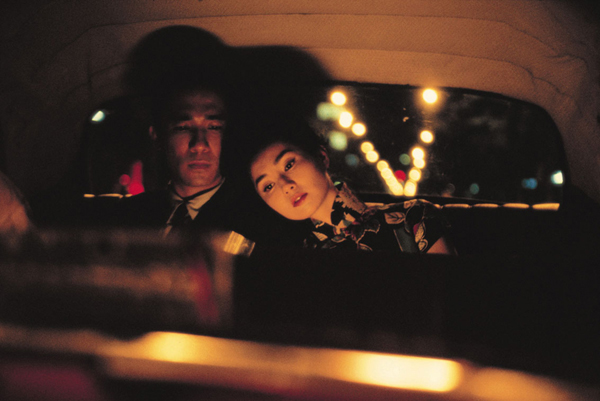
Wong Kar-wai truly created something special with this monumental film. An extravaganza of colors, music, characters and emotion weave a masterwork of modern cinema. Technically speaking, the movie is a true feast for the senses. The color palette is passionate, seductive yet subtle like the characters, the musical score is phenomenal, and the overt sense of nostalgia is rapturous.
The “non-Western” approach to the plot is a breath of fresh air in a genre oversaturated with non-convincing romances.
Mr. Chow and Mrs. Chan are neighbors, living in urban 60’s Hong Kong with their spouses. When they discover that Mr. Chow’s wife and Mrs. Chan’s husband are having an affair, they grow close to each other, comforting each other. Anger and loneliness quickly escalate to affection and tenderness, yet they agree they shall not succumb to their desires and become like their cheating spouses.
A platonic love affair is never easy to capture on film, but it is even more difficult to make it look real and so engrossing. The relationship between the two characters had the potential to not be doomed at all. They could have chosen to be together, leaving their toxic marriages and be happy. Yet they chose not to do so. They brought this on themselves.
At first, driven by anger toward their spouses, fearing they would become the same, and wanting to avoid their noisy neighbors, they hid behind their jobs, everyday life and routine. But as they started spending more and more time together, they realized they loved each other.
The main reason they froze their relationship on that level is that they feared themselves. They were apprehensive of commitment, which could slowly rot their pure idyll and force them to become like their spouses. They confined themselves in mere touches, glances and mutual support.
This is a rare case of doomed lovers that is equally romantic in a poetic way and heartbreaking as the protagonists chose to go their separate ways and remember each other however they wanted to. In the end, after many years, only a nostalgic feeling remained, and a sense of wonder of where this relationship could have led.
3. The Weeping Meadow (2004)
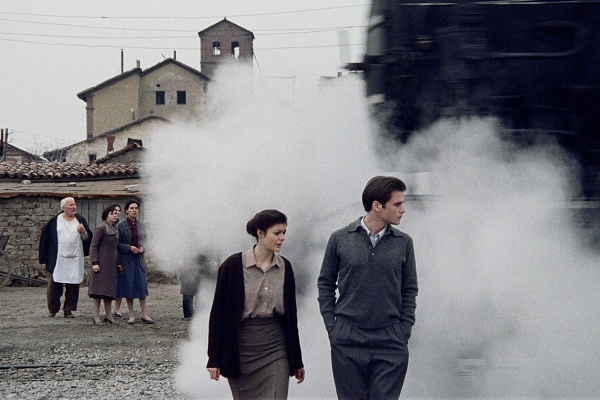
Theodoros Angelopoulos was not a simple director – he was a poet. He created movies that describe war, poverty, immigration and love like no other. He is not only the greatest Greek director but one of the greatest directors of all time, and his movies are truly part of the national heritage of Greece. This the first movie of his ambitious trilogy that he never managed to finish.
The weeping meadow is the story of modern Greece spanning from the end of World War I till the Greek Civil War, as told by the story of two lovers, Eleni and Alexis. When a band of refugees from Odessa return to Greece after the Russian Revolution, they bring with them Eleni, a young orphan girl.
We follow Eleni through the years as she grows and falls in love with Alexis. When their forbidden love is revealed, they get ostracized by the community. Eleni has two boys with Alexis who are quickly sent away. No matter how much they love each other, a dictatorship and World War II keeps them apart.
The slow and steady framing, a trademark of Angelopoulos’ directing, and the cinematography are simply out of this world, predisposing the viewer of what is yet to come. These were truly hard and turbulent times that did not allow a genuine romance.
A love so tender and fragile could never survive the bleakness of the times. Especially heartbreaking is the fact that in the second half of the movie, the two protagonists only communicate through letters, where we learn that Alexis, who has migrated to the United States seeking a better future, plans to enroll in the army in order to get American citizenship. This is the only way of bringing Eleni to the US.
After years in 1945, the war in Europe has ended, but the Pacific front where Alexis was sent is still hell on earth. This is the last we hear from him. Meanwhile in Greece, the civil war ensues, tearing apart every last bit of hope, where Eleni’s sons are on different sides, forced to fight each other.
The film is very difficult to watch as it is very slow and very grim. Yet if someone can endure it, they will be greatly rewarded. This an invaluable gem of European cinema.
2. The Crucified Lovers (1954)
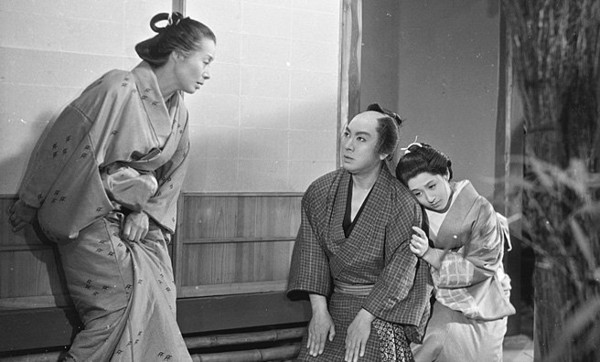
This is one of master director Kenji Mizoguchi’s most well known films along with “Ugetsu Monogatari” (1953). Mizoguchi is no stranger to adapting classic Japanese literature about forbidden love affairs and there is probably not a single Japanese director who does it better. In this film, he adapts a classic joururi from the 18th century.
In 17th century Japan, Osan, the wife of a wealthy scroll maker, is falsely accused of having an affair with a worker named Mohei. They both decide to flee the city and when Mohei learns that he is accused of adultery and forgery, they decide to commit suicide together. When Mohei declares his love for Osan as a last confession, she changes her mind and decides they will live together as fugitives.
The lyrical tone of the film is unparalleled, Mizoguchi’s trademark directing is top notch as always, and the cinematography by the great Kazuo Miyagawa is poetic, to say the least.
A story of a tragic romance that transcends formalism and the strict social class boundaries of feudal Japan, acting as defiance to the system could never be more relevant. In times where women were secluded and considered inferior, this is an example of a strong, independent character who lived her life however she saw fit. The finale, with the two lovers led dragged to execution but never seeming more happy, is especially memorable, summing up the general tone of the film.
Misfortune and bad circumstances brought Osan and Mohei together and even for a small amount of time, they were free. Death as a unifying factor is a common theme in Japanese literature, being the only way of sealing one’s love.
1. 5 Centimeters per Second (2007)

Makoto Shinkai is a god among gods in the highly competitive Japanese animation market. He exceeds the boundaries of animator, creator and storyteller. He is an artist who gets so personal with his creations that you can’t help but feel every emotion the characters feel, becoming one with them. His characters are not simple sketches – they are real and relatable in an almost disturbing way. Such is the power of his vision and creations. “5 Centimeters per Second” might as well be his finest work until now.
Narrated in three interconnected parts, the plot follows Takaki Tohno through the course of his life. Takaki had a very close friend when in school named Akari, who eventually has to move away because of her parents’ jobs. Takaki and Akari struggle to keep the flame of their friendship alive as distance and responsibility get constantly in the way. Finally, Takaki decides to visit Akari for one last time.
The story is as simple as it can get. But when it comes to emotional impact, it doesn’t hold back any punches. The two characters are so relatable to real-life situations that it doesn’t feel like an animated movie at all.
How many relationships have ended due to relentless distance, no one will ever know. The two characters clearly love each other and even though they live only an hour from each other by train, it feels like oceans are between them. The crushing distance and passing of time never forgive, never compensate.
In different segments of the film we follow an older Takaki, hollow and bitter, as he never accepted the fact that he and Akari drifted away. Like all of us, responsibility and routine keeps him busy, but there are these small pauses that are the most difficult. These small pauses when he reflects upon his life and cannot help but bring Akari’s face to his mind.
In the second part of the movie there is another girl named Kanae Sumida, who makes the whole experience even more unbearable and soul-crushing. She has a crush on Takaki, is always there for him, and attempts to understand and help him, but always fails. Simply because she came second.
Takaki and Akari’s doomed relationship is one for the ages. They might never see each other again, and even if they did they probably wouldn’t recognize each other, but they occupy a special place in each other’s hearts. Even though they are no more than strangers anymore.
Shinkai created a absolute masterpiece whose title is enough to mess you up as it refers to the speed at which cherry blossom petals fall. The cherry blossom trees are an integral part of Japanese culture as they represent the ephemeral of life and love due to their minimal blossoming time once a year. They are a common theme in Japanese literature and film, representing this bittersweet feeling of short-lived beauty.
Like two petals of the same tree that start to fall together and are quickly blown away by the wind in separate directions.
Author Bio: Diamantakos Yannis’ main studies consist of economics and law. Although he didn’t have the opportunity to study filmmaking like he always wanted, his passion for cinema, developed in a young age, never waned. On the contrary, it never stopped growing. He has been making lists and reviewing movies for years in his own website and is more than eager to disseminate his unceasing infatuation with cinema and its unparalleled magic.